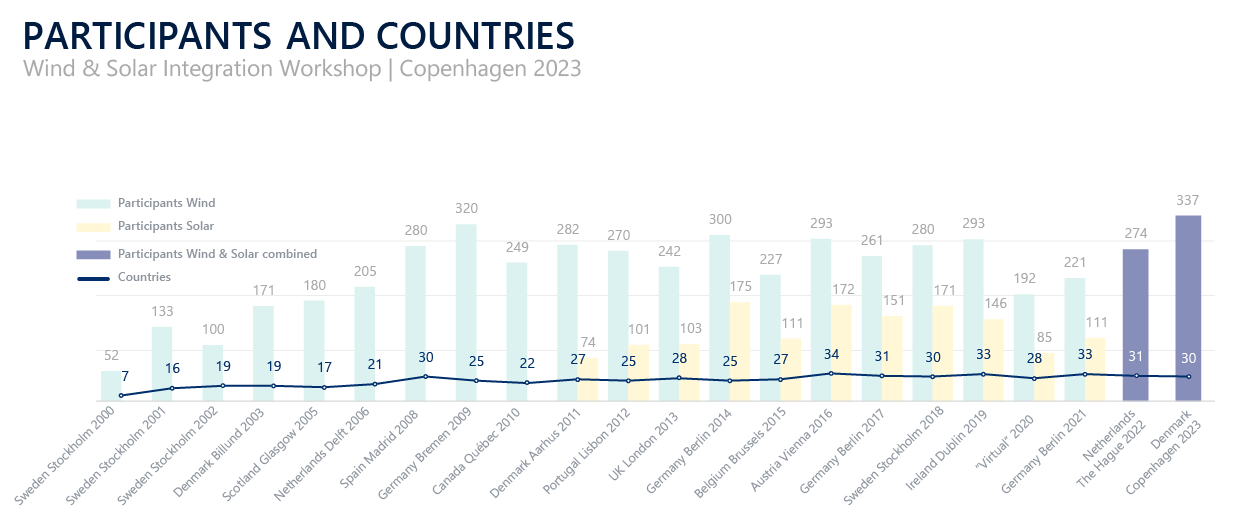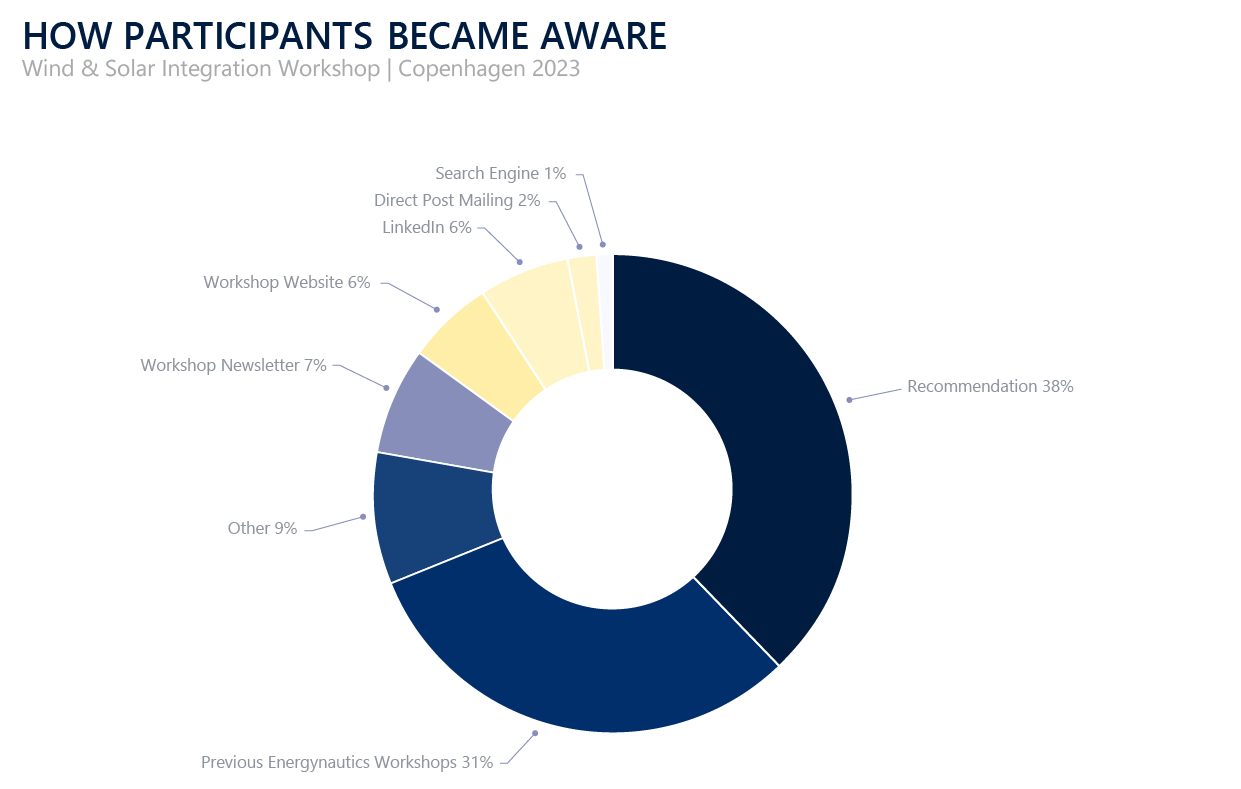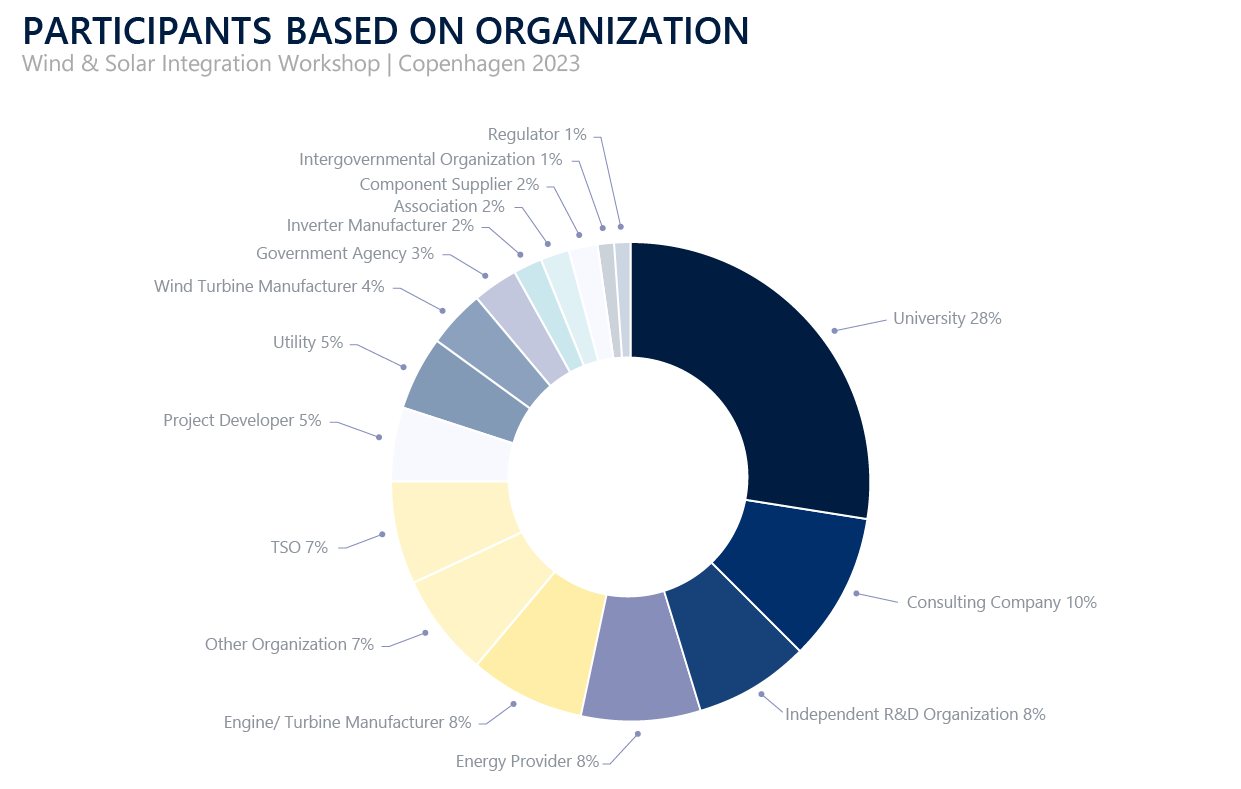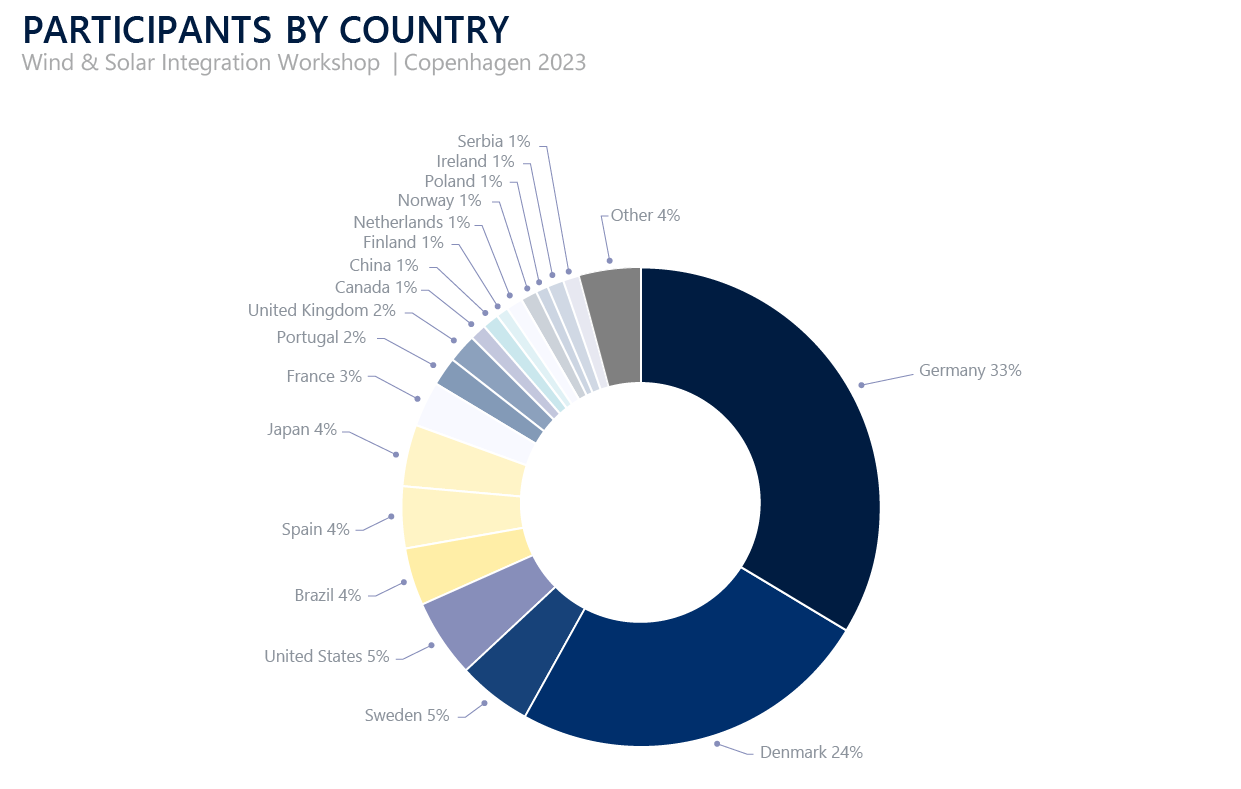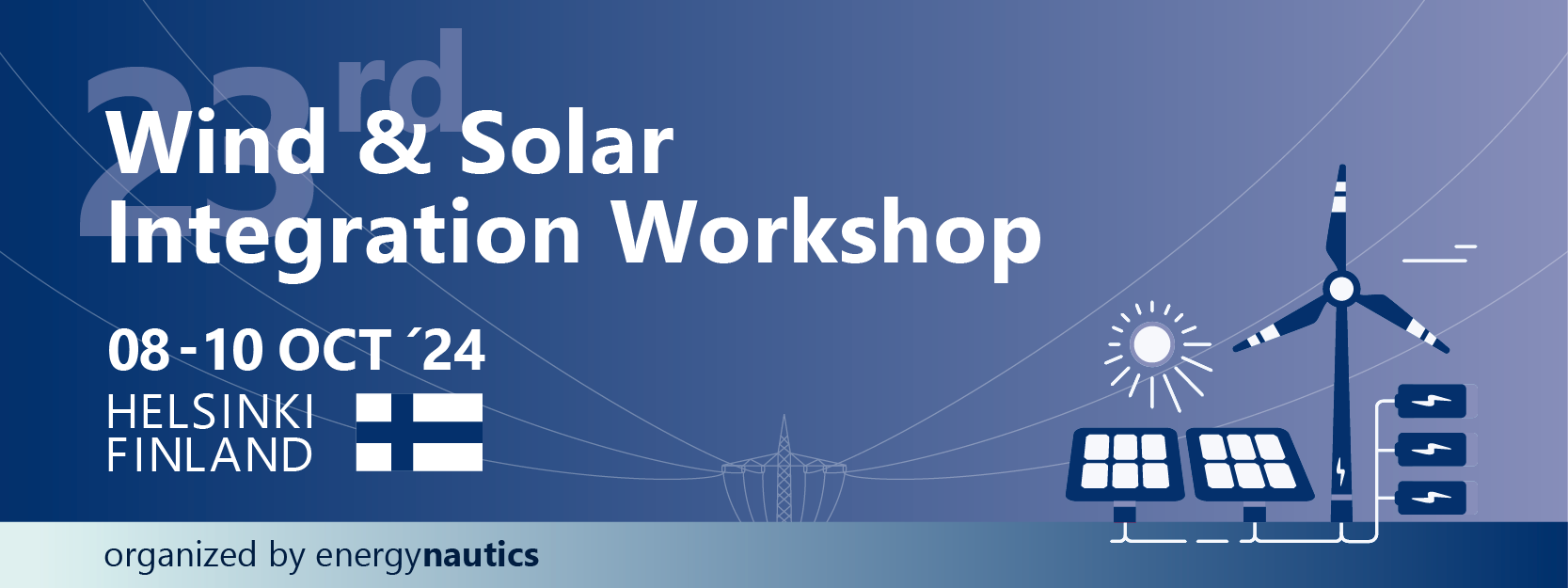Facts & Figures
The Wind & Solar Integration Workshop is designed for…
![]() power system operators
power system operators
![]() distribution grid operators
distribution grid operators
![]() wind turbine & pv manufacturers
wind turbine & pv manufacturers
![]() universities and research institutes
universities and research institutes
![]() consulting companies
consulting companies
![]() transmission grid operators
transmission grid operators
History
Back in 1999, two Ph.D. students at KTH – Royal Institute of Technology, Stockholm, Sweden, one of them Energynautics CEO Dr. Thomas Ackermann, spent hours discussing the integration of wind power into power systems and possible applications of HVDC technology for offshore wind farms.
These academic discussions led to the “International Workshop on Feasibility of HVDC Transmission Networks for Offshore Wind Farms” in 2000 and already included many experts from the wind industry. This Workshop then developed into the annual “International Workshop on Large-Scale Integration of Wind Power into Power Systems as well as on Transmission Networks for Offshore Wind Power Plants” and has from 2011 to 2021 been conducted in conjunction with the Solar & Storage Integration Workshop.
In 2022, the Wind and Solar & Storage Integration Workshops merged to the Wind & Solar Integration Workshop (with Special Topics Sector Coupling & Storage) to take into account the many possible synergies and to meet the wishes of the participants.
Purpose of the workshop / Target groups
The general purpose of this workshop, however, has not changed over the past years: It is to get researchers, economists and practicing engineers from different fields relating to wind & solar power and transmission systems to exchange their knowledge and discuss their experience in the area of large-scale integration of wind & solar power into power systems and transmission networks for offshore wind farms. The emphasis of this workshop is on both theoretical discussion and practical applications.
The workshop provides an international forum to
![]() discuss project experiences
discuss project experiences
![]() discuss innovative ideas and present results from ongoing research
discuss innovative ideas and present results from ongoing research
![]() stimulate interdisciplinary thinking between wind energy and power transmission industries, as well as universities
stimulate interdisciplinary thinking between wind energy and power transmission industries, as well as universities
![]() identify subjects requiring more research efforts
identify subjects requiring more research efforts
Presentations
Presentations are held by invited speakers from companies and leading research institutes as well as by workshop participants (Call for Papers).
